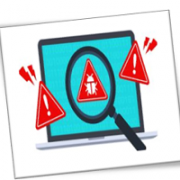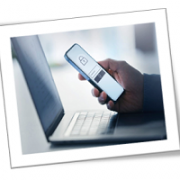7 signs your computer might have malware
Malware – it’s a loaded word that strikes fear into both luddites and hardened techies. From spyware and unwanted adware to software that’s solely designed to make your day a little less pleasant, there’s a wide range of malware floating around the web, waiting to be downloaded by an unwitting victim.
Thankfully, as protective antivirus software has become more commonplace and ever-easier to use, it’s trickier for malware to get its hands on your computer’s innards.
Don’t become complacent, though. Keeping a keen eye out for tell-tale signs of infection and being proactive about protection is the key to ensuring your devices and data stay perfectly safe.
Here we’ll be running down some of the key symptoms of malware infection to be on the lookout for. And, if you think your digital hazmat suit has been compromised and something nasty has wormed its way in, check out our guide on the best malware removal tools to remedy your silicon affliction.
1. Sluggish performance and frequent crashes
Just like any other software, malware takes up space on your hard drive and uses RAM to function.
However, unlike most programs you’ll have installed, the developers of said malware aren’t interested in streamlining your workflow or creating lightweight applications. All they’re interested in is their end goal – which, in some cases, could be as irritatingly simple as slowing your machine to a crawl.
If your device is taking an age to open new applications despite the fact you haven’t overloaded it, it might be time to crack out a specialist tool to see if something sinister is afoot.
2. New icons, tasks, or toolbars
Noticed something on your PC that you don’t remember installing yourself? It could very well be the doing of malware.
Although less common than in days gone by (we’re looking at you, Yahoo), toolbars and other ‘helpful’ additions that crop up in your browser aren’t always the altruistic applications they purport to be. Instead, they’re likely to be recording your activity and selling your data, or injecting bloated ads into the webpages you visit.
The same goes for tasks running in the background – although these can be little more difficult to decipher. Press ctrl-alt-del and enter Task Manager, and it’s likely you’ll be unfamiliar with plenty of the active processes. However, it’s worth googling any outliers just in case – or, of course, using dedicated software to scan your entire device.
3. Adverts everywhere
Serving infected users extra ads is a quick and easy way for malware developers to generate revenue.
As such, this is as clear-cut a case as we can think of. If you’re noticing trusted websites you frequently visit being overloaded with ads – often strange, foreign, untargeted ads – it might be time to break out your malware detection tool and run a scan.
If you’re seeing ads on your desktop – it can happen – it’s an even surer sign that your device isn’t as squeaky-clean as it used to be. Take action, and stop the ads in their tracks.
4. Your browser settings have changed
Once it’s inside, malware likes to make itself comfortable and adjust its surroundings to suit its needs.
A common symptom of infection is noticing your homepage has changed – doing this is likely to benefit the creator, as the homepage’s traffic will increase ad revenue in real terms. Other settings that may change are cookie settings, your default search engine, and the addition of new extensions.
5. Disabled security software
If some cunning malware has made it past your defenses, it may take action against any security software already installed. Just like when altering your browser settings, malware may well change settings to make it easier for it to do its job.
This could include making firewall rules more lenient, or even totally deactivating all your security software like antivirus. It’s always worth checking in on your AV software to make sure it’s still functioning as you intend – and if not, make sure you take action to stop your settings being changed again.
6. Your hard drive is inexplicably filling up
Another symptom of a virulent malware infection is a hard drive full to bursting without you making any large downloads to explain it.
This is due to the fact that some malware – often adware – is concealed within the folders of seemingly harmless applications. This may be because you downloaded a free program from an unauthorized source or worse: downloaded a pirated version of an expensive app.
Beyond the copyright implications, this is yet another reason to stay savvy about where you’re sourcing your software from, and to always pay for your tools and entertainment.
7. Your internet usage is through the roof
Many forms of malware require a constant internet connection, and use it to download secondary infections.
Other forms of malware like botnets and spyware also need a constant connection to a ‘command and control server’. If you’ve been exposed to these most sinister of infections, your internet will consistently be in action thanks to the back-and-forth between your device and this server.
While excessive internet usage is unlikely to be an issue itself in the era of largely unlimited Wi-Fi plans, it’s a useful symptom to help diagnose any malware-based issues you may be suffering from.
Are you interested in learning more about cybersecurity? Call us today and discover how our wide array of tech services can safeguard your business.
If you are looking for an expert to help you find the best solutions for your business talk to GCInfotech about a free technology assessment
Published with consideration from TechRadar SOURCE












